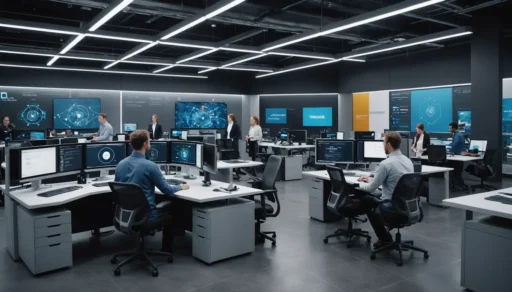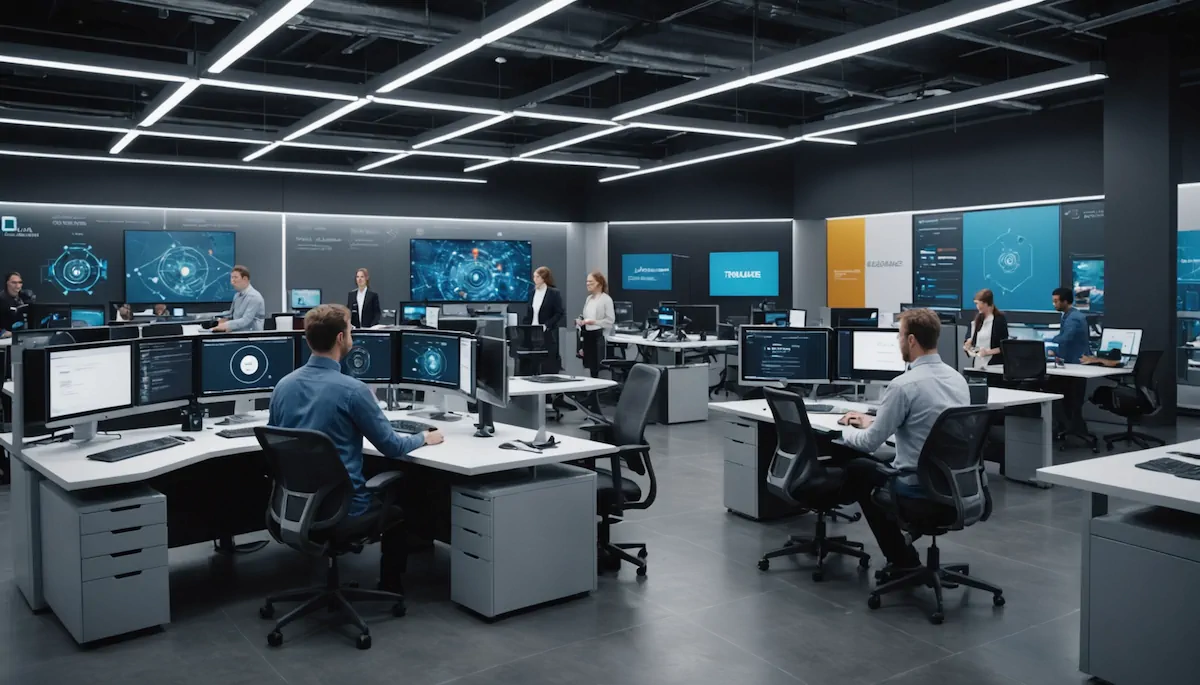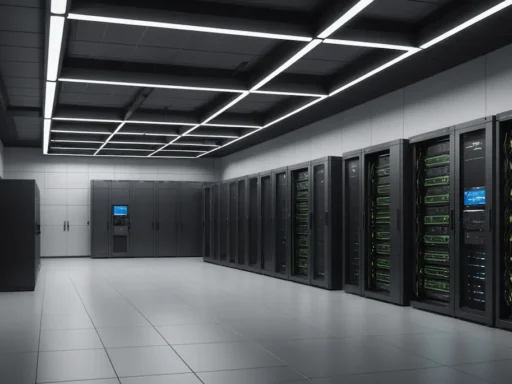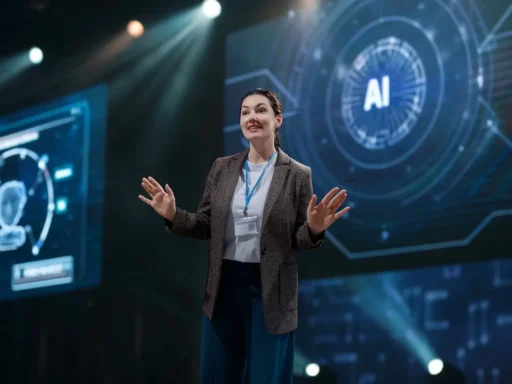Amazon just dropped $8 billion into a single bet—and it’s not on flying drones or cashier-less stores. It’s on Anthropic, a lean AI startup with one edge: groundbreaking foundation models built for safety and scale. While other tech giants circle the generative AI gold rush with bloated branding and “ethical AI” taglines, Amazon’s move is about control, infrastructure, and serious upside.
Forget the headlines shouting “AI will change everything”—this play is already changing everything. And it’s less about hype, more about real chips, real cloud compute, and real market capture. By pouring billions via convertible notes over a structured funding timeline, Amazon isn’t just hedging its position—it’s planting its flag. Hard.
So what’s Anthropic bringing to the table? And why does Amazon even need them if AWS is already the heavyweight of the cloud game? We’ll unpack the numbers, the strategy behind the scenes, and how this could be the blueprint for the next generation of intelligent systems—especially if you’re an enterprise betting your stack on performance and safety.
Breaking Down Amazon’s $8 Billion Bet On Anthropic
Let’s lay it out clean.
Amazon’s commitment to Anthropic hits the $8 billion mark—delivered not in one splashy check, but in staged convertible notes. This structure keeps skin in the game and flexibility in returns.
Here’s how it unfolded:
| Funding Phase | Amount | Timing |
|---|---|---|
| Initial Investment | $1.25 billion | September 2023 |
| Second Tranche | $2.75 billion | March 2024 |
| Follow-on Capital | $1.3 billion | Late 2024 |
| Additional Commitments | $2.7 billion | Through 2025 |
This isn’t a startup valuation fluff piece. Anthropic’s value surged from $18 billion in 2023 to a projected $60 billion by 2025. That’s a 3x leap powered by real demand, real tech, and Amazon putting their cloud where their mouth is. The background noise here: Google’s $3 billion investment in the same company and Microsoft’s $14 billion+ OpenAI firepower. Everyone wants a stake in whoever builds the future bots that don’t hallucinate or pull a Twitter-thread meltdown.
Why Amazon Isn’t Just Building Their Own Claude
After years of dipping into machine learning with Alexa, Rekognition, and other tools under AWS, Amazon’s been caught flat-footed in the foundation model race.
Until now.
Here’s their real AI strategy:
- Outsource risk and research to a focused player like Anthropic.
- Integrate Claude models deeply into Amazon services like Bedrock and Alexa.
- Lock in enterprise clients to the Claude ecosystem, hosted on AWS.
Amazon isn’t chasing AI for press coverage. They’re building pipelines to own every layer, from silicon (Trainium, Inferentia) to platform (Bedrock). Partnering with Anthropic gives Amazon pre-baked capabilities in safe, interpretable AI—something ChatGPT and friends keep fumbling over on X threads and Reddit audits.
With Claude 3 Opus already outperforming GPT-4 in areas like logic, math, and code reasoning, Amazon isn’t just licensing smarts. They’re anchoring their generative AI strategy around a foundation model that doesn’t just complete sentences—it makes fewer costly mistakes.
Anthropic’s Technical Edge: Built For More Than Benchmarks
Anthropic isn’t just another transformer shop.
They’re obsessed with safety—like, actually baking interpretability and alignment into the base layers of how Claude learns and responds. Their core stack is built around Constitutional AI—models that essentially argue with themselves to reinforce human-aligned behavior.
This matters for:
– Enterprises working in regulated industries like finance, healthcare, and public policy.
– Developers looking to avoid compliance nightmares.
– Anyone sick of the “hallucination problem” plaguing even the most hyped language models.
The Claude family—Haiku, Sonnet, and now Claude 3 Opus—targets practical performance at scale, not just leaderboard flexing. Early benchmarks show Claude Opus leads in direct reasoning and multi-step planning. That’s become a magnet for companies like Pfizer and Bridgewater, who aren’t just deploying chatbots—they’re building workflows on top of Claude’s thinking engine.
Amazon saw all this and made a choice: go all in or get outpaced.
One link ties it all together: Claude’s deployment via Amazon Bedrock. This makes it dead simple for enterprises to access safe, powerful language models without standing up new infrastructure or rolling compliance dice.
There’s more coming in how AWS chips, Bedrock integration, and Claude’s next iterations connect—but this first move? It’s Amazon telling competitors they’re not just in the fight. They’re aiming to own the arena.
Big Tech Backing and Industry Implications
When Amazon first injected $1.25 billion into Anthropic back in 2023, most people saw it as another classic “big tech throws big money” move at AI hype. But within a year, that bet turned into a calculated bid to reshape power dynamics across the trillion-dollar AI frontier. With Microsoft tethered to OpenAI and Google still entangled in its own tangle of research spinouts, Amazon went with a quieter — and potentially more radical — approach.
By backing Anthropic, Amazon challenged the very idea that foundational models needed to be built in massive walled gardens. Instead, they offered cloud scale and chips on tap — and Anthropic delivered models like Claude 3 that could outreason OpenAI’s GPT-4 on logic, math, and code. By 2025, this strategic alignment vaulted Anthropic’s valuation to $60 billion, three times what it was just two years earlier.
Amid all this, the big play wasn’t just AI bragging rights. It was dollars, dominance, and real infrastructure placement in the future of intelligent systems. The partnership helped Amazon inch closer to snatching market share in the projected $1 trillion AI market by 2030.
Anthropic, once an obscure OpenAI offshoot, hit $1 billion in annualized revenue by the end of 2024 — a tenfold increase year-over-year. That figure doesn’t just speak to high-end model adoption. It points to enterprises — from drugmakers to airlines — actually using these systems beyond the sandbox.
And what about Amazon? Their financial stake ballooned to $14 billion by late 2024, roughly 75% above their initial buy-in. A rare win in a season where many AI investments still struggle to break even.
Despite concerns around tech monopolies, the UK’s Competition and Markets Authority saw no issue. Their decision in 2024 allowed the deal to proceed, stating that Anthropic retained operational independence. No antitrust red flags. No intervention orders.
On paper, both companies tout their devotion to ethical AI. Anthropic pushes frontier safety research, while Amazon leans on its cloud governance frameworks. But behind the PR gloss lies a tougher question: Who’s defining “responsible AI” — developers, users, or regulators who’ve shown up late to every tech disruption so far?
Technological Advancements Brought by the Amazon-Anthropic Partnership
Autonomous agents that book your flights and fix your spreadsheets? That’s no longer science fiction — that’s Claude 3.5 Sonnet. Rolled out just halfway through 2024, this model added something rare in foundation systems: the ability to actively interact with web interfaces. Called “Computer Use,” this feature lets AI browse, select, and execute digital workflows — without a human hand guiding each prompt.
But autonomy’s nothing without accuracy. Claude 3.5 Sonnet wasn’t just faster — it was smarter. Benchmark evaluations revealed it outperformed GPT-4 in logic chains, complex reasoning tests, and advanced code generation. Underneath that power was Amazon’s carve-out in the AI stack: high-efficiency Trainium chips for training, Inferentia for inference, and Bedrock as the distribution layer.
This partnership didn’t just supercharge performance numbers. It rewired the way Amazon’s AI stack syncs up. Claude is now embedded across AWS tools, potentially lifting systems like AWS Glue into new productivity zones where models comprehend user intent at deeper levels. Alexa, too, is rumored to be in testing phases with Claude models as its new brain — one that could finally make voice assistants more than glorified Bluetooth remotes.
If you peel back the technical gloss, what’s really happening here is a shift from general-purpose AI toward scalable, domain-specific intelligence. Amazon and Anthropic are collaborating on tuned datasets, industry-safe outputs, and low-hallucination protocols. That’s crucial for sectors like finance, government, and medicine, where being “almost right” isn’t good enough.
Through their Future Labs initiative, the duo are exploring safer scaling of transformer systems — placing interpretability and fail-safes at the core. Unlike “move fast and break things” AI shops, they’re betting enterprises won’t tolerate models that guess or glitch in high-risk applications.
There’s still concern about AI alignment — not just in how systems behave, but in who they serve. Anthropic’s safety-driven constitution guidance is one step, but their models still run atop data centers that demand outsized energy. Amazon claims carbon accountability, yet emissions from widespread Bedrock deployments have yet to be externally verified.
Ultimately, what’s surfacing here is a model of enterprise AI that doesn’t just prioritize performance — it grapples (at least partially) with ethics and incents safety. If these systems are to become economic infrastructure, companies like Amazon and Anthropic have no choice but to make trust as important as throughput.
Real-World Applications and Business Cases
Can an AI assistant handle your calls, reschedule your meetings, and flag contract errors in real time? That’s what early field tests of Claude as Alexa’s backend are suggesting. Amazon isn’t just upgrading an assistant — it’s merging conversational UX with enterprise-grade intelligence.
In an internal pilot, Claude models are being used to drive Alexa’s next-gen responsiveness. From contextual memory to handling multi-step requests, it marks a shift away from keyword-triggered bots to systems that carry intent over time. No more yelling “turn off the lights” five different ways.
That same brain now powers tools across industries. Pfizer, for example, is using Claude via Bedrock to speed up drug discovery pipelines — automating research summaries and synthesizing clinical documents for genetic conditions. Delta Air Lines has embedded the AI into its customer support architecture, improving resolution times during peak demand by analyzing dialogues in seconds.
At Bridgewater, hedge fund engineers use Claude to write and optimize code snippets that once took hours. The AI’s native coding knowledge now powers rapid prototyping, feeding into everything from portfolio tools to compliance monitoring.
Across these cases, certain patterns emerge:
- AI takes over repetitive, rules-based tasks for scale
- Security layers tie into enterprise compliance needs, especially in finance and healthcare
- Human operators shift from doers to supervisors, reviewing and fine-tuning outcomes
Next comes evolution. As Claude continues to advance, Amazon sees opportunities for vertical-specific deployments — intelligent study companions in schools, generative itinerary builders for travel firms, retail advisors that fine-tune campaigns in real time. Amazon’s Bedrock already serves over 70,000 businesses, but customized models may be where things really scale.
Anthropic’s alignment with Amazon isn’t just about tech muscle — it’s about distribution. Few startups could launch into the enterprise fast lane as quickly. And for Amazon, this isn’t just about cloud contracts. It’s about embedding their version of intelligence into how the world works, learns, heals, travels, and buys.
As 2030 looms, and the $1 trillion AI market forms, every business betting on data will need an AI co-pilot. The Claude-Amazon duo is making the case for theirs to be the most enterprise-ready — and perhaps, the most human-aware.
Funding Round Analysis and Financial Impact
If someone handed you a billion-dollar startup and said, “Now compete with Google, Microsoft, and OpenAI”—where would you even start?
Anthropic sure knew. But they didn’t walk into that storm alone. Backed by Amazon’s deep pockets and infrastructure muscle, they created a financial roadmap that’s equal parts bold and strategic.
Investment Model and Payouts
Amazon didn’t just dump cash into Anthropic like a VC trying to cover a hype cycle bet. They structured the funding mostly through convertible notes. That means Amazon’s money can easily turn into equity when Anthropic hits the right milestones.
And those milestones came fast:
- $1.25 billion in Sept 2023
- $2.75 billion by March 2024
- $1.3 billion in filings late 2024
- With $2.7 billion more set through 2025
This wasn’t some one-off windfall. It was a phased weaponization of capital—to make sure Anthropic didn’t just scale fast, they scaled smart.
What’s wild? By the end of 2024, that investment ballooned from capital outlay to a $14 billion stake value. Practically a 75% ROI in enterprise AI speedrunning.
Amazon wasn’t Anthropic’s only fan either. While Big A fronted most of the money, others jumped in once they saw Claude models performing under pressure—triggering fresh funding rounds that pushed Anthropic’s valuation from $18B in 2023 to $60B projected by 2025.
Amazon’s Competitive Edge
Make no mistake—Amazon isn’t doing this for optics. It’s chess. Not checkers.
Amazon tied this investment into their entire AI supply chain with ruthless focus:
Claude models live inside Bedrock, Amazon’s AI-as-a-Service layer. Training happens on AWS. Inference happens on their own EC2 Inferentia chips. And if you want to scale up Claude-like models? You’ll probably need Trainium-optimized forks built with help from Annapurna Labs.
That’s vertical integration with profit at every layer.
Compare that to Microsoft, who has to share credit—and market-revenue—with OpenAI. Or Google, still sweating over Gemini-second-place syndrome while also being a minority investor in Anthropic.
Amazon’s play here isn’t just about having the best LLM. It’s about making sure that even if they don’t—they still make money on whoever does.
And they’re not done. Sources from investor roundtables and SEC-prepped filings show Amazon’s kicking around internal plans for more AI investments—both deeper into Anthropic and across adjacent startups tackling multi-agent LLM orchestration, synthetic data generation, and automated compliance auditing.
Ethical AI and Safe Partnerships
Let’s kill the hype: Anthropics’ Claude didn’t become a GPT-4 challenger just on tech. It got real attention because it promised something people crave in AI—control, safety, and transparency.
And Amazon? They’re banking hard on that promise becoming the new normal.
Focus on Responsible AI Development
Claude didn’t launch with “do anything” prompts or black-box behavior. Every version—from Haiku to Opus—was built with embedded safety layers. Think less Skynet risk, more “run-your-enterprise-without-a-PR-crisis” design philosophy.
Internal whitepapers leaked to policy committees showed Anthropic training Claude on Constitutional AI. That means it weighs responses not just for accuracy—but against a set of internal ethical rules developed from human rights literature, democratic norms, and bias mitigation guides.
They also opened pieces of Claude 1.3’s architecture—letting the academic community tear it apart. That’s rare. GPT-4 and Gemini? Still locked up tighter than Fort Knox.
Collaborative Regulation Advocacy
Now here’s where it gets sticky. Most AI leaders like talking about policy—few actually show up to write it.
Anthropic and Amazon both joined Future Labs, a nonprofit-style coalition pushing for safe AI frameworks across sectors. At policy summits, they’re not just promoting innovation. They’re proposing guardrails.
Amazon’s own cloud whitepaper series now includes detailed appendices on embedding Claude models inside HIPAA/HITRUST environments—critical for their healthcare clients like Pfizer and Delta Health.
Even skeptics sitting at the EU’s AI Act advisory tables admitted the Claude reps “actually listened”—which, if you’ve been in these meetings, is rarer than a bug-free beta model.
Public Trust and Long-Term Sustainability
It doesn’t matter how strong your AI is if public sentiment tanks it overnight.
Anthropic’s entire ethos aligns with long-term regulatory compliance. Not reactive fixes after abuse. But proactive tools—like explainable reasoning logs, limited memory recall toggles, and opt-out options for enterprise training feedback loops.
Users—from health admins to travel analysts—trust Claude because it’s consistent. It avoids hallucinations better than rivals on benchmarks in law, code, and math.
And Amazon’s infrastructure helps enable Claude’s long memory, secure API calls, and data residency controls for global regions where GDPR isn’t just a sticker—it’s a threat vector.
Add it up? They’re not just building smarter AI. They’re engineering public buy-in to make sure it sticks around.
Conclusion: AI Collaboration as a Future Catalyst
The Amazon-Anthropic partnership isn’t just another tech collab. It’s a signal flare for where enterprise AI is heading—and how the rules of power, ethics, and scalability are shifting.
Summarizing the Collaboration Impact
Anthropic carved out AI territory once thought untouchable without Google-scale resources. Amazon handed them the map and tools to go further. Together, they built an engineering and policy stack strong enough to shake up even OpenAI’s lead.
What makes this partnership stand out? It’s operational at every layer—hardware, software, training infrastructure, cloud deployment, safety policy, and enterprise go-to-market. That’s not just a playbook. That’s a verticalized blueprint that startups and government regulators alike are now watching closely.
Claude’s success came not just from smarter weights—but from smarter bets on safety, reliability, and user trust. And Amazon reaps the benefit whether Claude leads or lags—because they own the pipes either way.
Call to Action for Ethical AI
If you’re building in this space—ask yourself: Are you optimizing for market value or sustainable trust?
The next generation of AI builders will need to bake in guardrails, human control, and regulatory foresight—before the lawsuits, not after.
We need more moves like this: long-term bets, strategic alliances, and embedded accountability. Not another flash-in-the-pan SaaS model scraping Reddit for training data.
Now is the time for purpose-built collaboration.
The kind that doesn’t default to “move fast, break things.” The kind that says—let’s move forward fast, yeah. But let’s keep it built to last.







